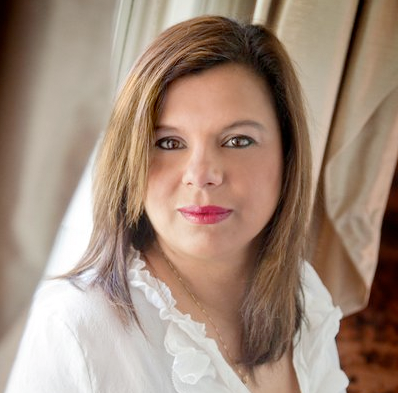Producing Corporate Identity Videos Part 3: Directing and Editing
In this final chapter of our 3-part series on Corporate Identity Videos, we'll go on set and into the editing bay with producers Rochelle Morris of Preface Films, Keith Kelly of Innovative Communications, Ryan Koral of Tell, and Dave Williams of Media Wave. Some of the clips they share here are of their own corporate identity videos.
Working Both Sides of the Camera
When appropriate, Innovative Communications' Keith Kelly often takes a different approach. Earlier in this series, Kelly described his preference for wearing multiple hats as a producer, including writer and--at times--talent. "I save a lot of money for clients" this way, he says, "and I'm thinking things through every step of the way."
Whenever possible, Kelly also takes on crew roles and shoots everything himself. Kelly's sets usually involve a basic camera and light set with some add-ons like sliders and jib cranes to add dimension, especially when shooting in factories. Sometimes he hires freelance grips and gaffers or teleprompter help, but avoids it when possible. Having worked on "segmented projects," where professions are differentiated, he says, "I don't love that. I like the symmetry of being in control start to finish."
Keith Kelly stars, naturally, in his own identity video for the 60secondmedia.tv branch of his company.
Kelly's experience as a professional actor helps him when directing talent, both professional and non-paid, especially when nerves get the best of them. "It's funny how powerful a CEO can be speaking at meetings and in front of an audience, but once that red light goes on, all that courage just flows out their toes."
Using Professional Talent
 Rochelle Morris of Preface Films has had luck with talent both voluntary and paid. "No issues so far," she says, adding that actors "can add a total flair to a project." On most projects, she works with only one other crew member, and "therefore both team members need to be versatile and capable of audio and lighting as well as shooting." On larger projects however, additional specialists might be needed--talent, audio/lighting, motion graphic specialist, or an additional shooter."
Rochelle Morris of Preface Films has had luck with talent both voluntary and paid. "No issues so far," she says, adding that actors "can add a total flair to a project." On most projects, she works with only one other crew member, and "therefore both team members need to be versatile and capable of audio and lighting as well as shooting." On larger projects however, additional specialists might be needed--talent, audio/lighting, motion graphic specialist, or an additional shooter."
Making the Cut
When it's time to start editing, Dave Williams includes the client in the first scrub-through of the raw footage to select portions that have the most impact. They might do this together, or instead he'll put up a private gallery of timecoded a/b roll interviews online, send the client a link, and ask them to go through and make a list of which portions they want from each interviewee. From there, he starts putting the story together.
 Prior to editing, Ryan Koral of Tell asks his clients if there is anything they witnessed in production that they do not want to be included in the final product. It's a tip he's learned from producing wedding films--"We've learned to ask beforehand if there's anything and anyone the couple doesn't want in the film, so that we're not dong something twice because we didn't ask the right questions."
Prior to editing, Ryan Koral of Tell asks his clients if there is anything they witnessed in production that they do not want to be included in the final product. It's a tip he's learned from producing wedding films--"We've learned to ask beforehand if there's anything and anyone the couple doesn't want in the film, so that we're not dong something twice because we didn't ask the right questions."
To assist in the editing process, especially when not using a rough cutter, Koral's shooters take notes just after the shoot to point out strong segments. They might note, "We got some really good b-roll of this or that" or "I thought this interview went really well." This way, the editor will have stuff right away that should be useful.
Normally, Koral's team will rough-cut a draft before shipping the footage on hard drives to their main editor and creative director John Azoni, two hours away from Detroit, or more recently, sharing smaller video files and photos with him online. (Azoni used to work in-house, but his wife took a job in the west side of Michigan, so he now works remotely.) "We give him as much client direction as we are given," Koral says. Anyone who works on the project can review meeting notes, so that when they approach the project, they can start in on it right away: "When it's time to edit, it's go time."
The editing process continues with Azoni emailing Tell project files to send off to clients. The draft goes first to Ryan and studio and operations manager Matt Demorest for quality assurance--"so we can be sure the editor caught the vision"--and then to the client.
Unlike wedding films, revisions are an expected part of the process. The client might make suggestions, at which point it's sent back to Azoni, who submits a second draft. "Here the hope is that the client has given us everything that they need," so that the Tell team is only fine-tuning in draft three, laying down a cleaner music bed, or a better fadeout at the end. His clients know that any changes requested after draft three involve additional scope.
Korel's hope is that the completed film be a unique piece that tells the company's story. Koral strives for originality, even though some videos might be composed of similar elements. "Just as with weddings, we might be shooting at the same venue we've shot at before, but everything about their story is different," he says. "We want our clients to be proud of their piece, and for the video to set us apart from competitors."
Related Articles
Successfully implementing branding in online video means making sure every video you produce accurately reflects and advances your company's or client's brand identity at each stage of the production process, as well as in your production style. This article explains how and when to pay attention to branding in your productions.
To storyboard or not to storyboard? Should the story drive the interviews or vice versa? At what point in a corporate project do you set video length and budget? These questions and more are discussed in Part 2 of our Producing Corporate Identity Videos series.
In as few as 30 seconds, a singular corporate identity video can convince a website visitor of a company's expertise, poise, and uniqueness. But it's easier said than done, of course, so we talked to four leading producers about how they approach these types of projects. In this 3-part series they'll share their secrets on telling and selling corporate stories.